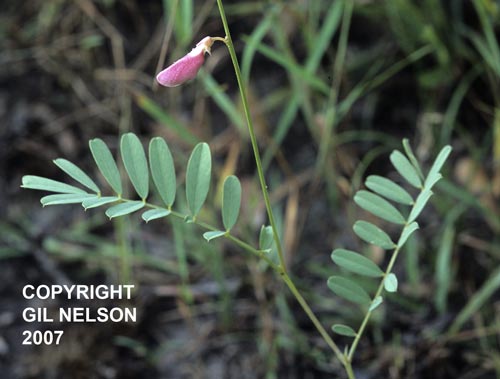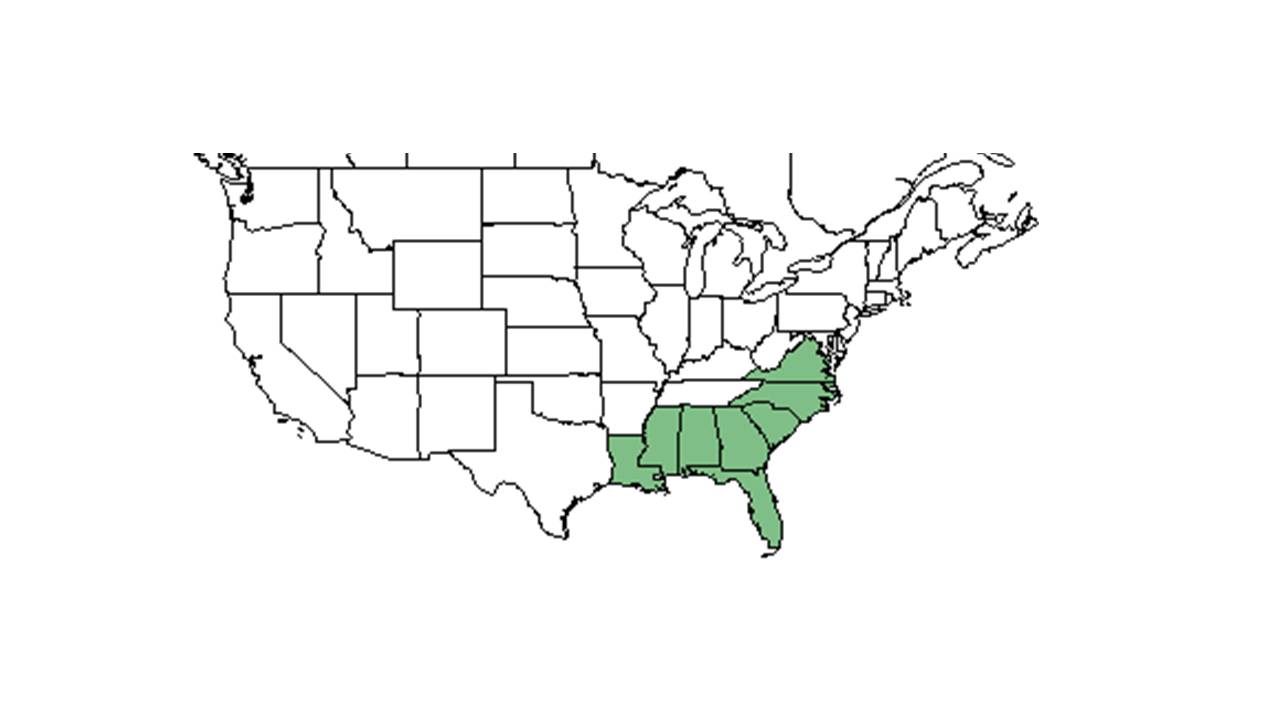Tephrosia hispidula
| Tephrosia hispidula | |
|---|---|

| |
| Photo taken by Gil Nelson | |
| Scientific classification | |
| Kingdom: | Plantae |
| Division: | Magnoliophyta – Flowering plants |
| Class: | Magnoliopsida – Dicotyledons |
| Order: | Fabales |
| Family: | Fabaceae ⁄ Leguminosae |
| Genus: | Tephrosia |
| Species: | T. hispidula |
| Binomial name | |
| Tephrosia hispidula (Michx.) Pers. | |

| |
| Natural range of Tephrosia hispidula from USDA NRCS Plants Database. | |
Common name: sprawling hoarypea
Contents
Taxonomic notes
Synonym: Cracca hispidula (Michaux) Kuntze
Description
"Perennial herbs and shrubs with either monopodial or sympodial branching. Leaves odd-pinnate; leaflets 7-29 or rarely 1-41, entire, glabrous or pubescent above and always pubescent beneath, usually with prominent, parallel, secondary veins, estipellate, inflorescences terminal, axillary or apparently opposite a leaf, more or less racemose, with 2-10, papilionaceous, pedicellate flowers at each node with the cluster subtended by a bract and each pedicels subtended, 5-lobed, the lowers the long longest; petals clawed; stamens monadelphous or diadelphous. Legume sessile, linear, straight or slightly curved, usually compressed, nonseptate, dehiscing into 2 separate valves." - Radford et al 1964
"Perennial herb from a woody, fusiform taproot; stems decumbent to erct, to 5 dm long, more or less appressed to spreading short-pubescent to short-pilose. Leaves mostly 5-11 cm long; leaflets 9-23, oblong to ovate-lanceolate or narrowly elliptic, 0.7-2.2 cm long, 2-7 mm wide, glabrous to densely short-pubescent above sparsely to densely short-pubescent beneath. Inflorescences opposite the leaves, 5-15 cm long, usually longer than nearest leaf, with a terete or inconspicuously flattened peduncle or rachis and persistent, narrowly lanceolate to linear bracts; pedicels 2-8 mm long. Calyx 3-4 mm long; appressed to spreading short-pubescent; petals at first white, turning pink and then carmine (drying purplish), 1.2-1.5 cm long; stamens diadelphous. Legume 3-4.2 cm long, 4.5-6 cm broad, sparsely to moderately short-pubescent, trichomes 0.6 mm or more long." - Radford et al 1964
Distribution
Ecology
Habitat
In the Coastal Plain in Florida, T. hispidula can be found in recently burned longleaf pine/wiregrass communities; pine flatwoods; sandhills; mixed pine and hardwood swamps; edges of pond cypress wetlands; pine-scrub oak-palmetto woodlands; slash pine-wiregrass woodlands; and along the shore of rivers (Conde et al. 1983; FSU Herbarium; Gliztenstein et al. 2003). In disturbed habitats it has been found along grassy road margins, sand in open woods by a road, sandy peat of a pine flatwoods ditch, and a recently planted slash pine plantation. Substrate types include rich loamy sand, mucky sands, and dry sands (FSU Herbarium). It has been observed to grow with Tephrosia chrysophylla (FSU Herbarium).
Phenology
It has been documented flowering and fruiting May through October (FSU Herbarium).
Conservation and management
Cultivation and restoration
Photo Gallery
References and notes
Conde, L. F., B. F. Swindel, et al. (1983). "Plant species cover, frequency, and biomass: Early responses to clearcutting, burning, windrowing, discing, and bedding in Pinus elliottii flatwoods." Forest Ecology and Management 6: 319-331.
Florida State University Robert K. Godfrey Herbarium database. URL: http://herbarium.bio.fsu.edu. Last accessed: July 2015. Collectors: Loran C. Anderson, Cecil R Slaughter, R. Kral. States and Counties: Florida: Bay, Franklin, Leon, Levy, Liberty, Madison, Volusia, Wakulla. Compiled by Tall Timbers Research Station and Land Conservancy.
Glitzenstein, J. S., D. R. Streng, et al. (2003). "Fire frequency effects on longleaf pine (Pinus palustris, P.Miller) vegetation in South Carolina and northeast Florida, USA." Natural Areas Journal 23: 22-37.
Radford, Albert E., Harry E. Ahles, and C. Ritchie Bell. Manual of the Vascular Flora of the Carolinas. 1964, 1968. The University of North Carolina Press. 626. Print.